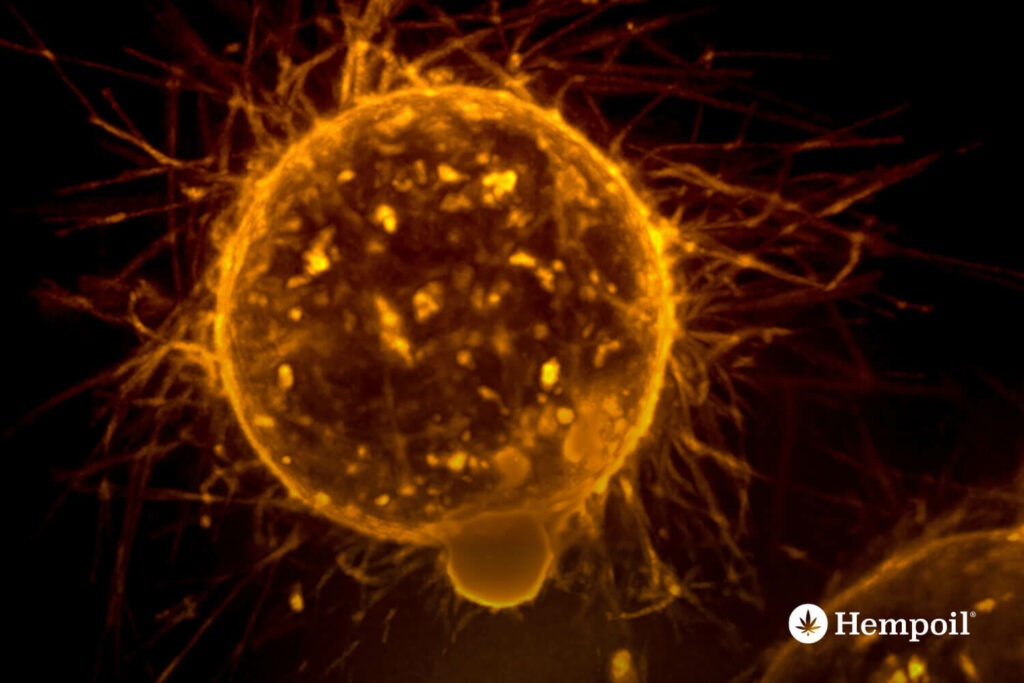Cáncer, verduras crucíferas y sistema endocannabinoide (SCE)
¿Existe una relación entre el sistema endocannabinoide, las verduras crucíferas y el cáncer? Ya sabemos que las verduras crucíferas protegen al organismo humano de varios tipos de cáncer. Las verduras crucíferas contienen glucosinolatos que parecen tener propiedades anticancerígenas que inhiben la propagación de las células cancerígenas. Estudios anteriores mencionaban que el consumo regular de verduras de hoja verde reducía el riesgo de cáncer de mama, pulmón, colon, vejiga y próstata.
Estudios recientes especulan que las verduras crucíferas, entre las que se encuentran la coliflor, las coles de Bruselas, el repollo, el brócoli, la col rizada, el bok choy, etc., contienen un compuesto, el 3,3 diindolilmetano (DIM), conocido por sus propiedades anticancerígenas expresadas a través del sistema endocannabinoide, y específicamente a través del receptor CB2. El diindolilmetano es un compuesto orgánico conocido por sus propiedades antiinflamatorias y anticancerígenas para el cuerpo humano, ya que regula el metabolismo hormonal e inhibe el crecimiento y la propagación de las células cancerosas. Los estudios informan de que este compuesto bloquea el progreso y la propagación de las células cancerosas ofreciendo propiedades anticancerígenas al organismo.
Sistema endocannabinoide y neurorreceptores
El sistema endocannabinoide está formado por los neurorreceptores CB1 y CB2, es decir, los primeros receptores endocannabinoides detectados. Los receptores cannabinoides CB1 interactúan con el fitocannabinoide THC (tetrahidrocannabinol). Esta afinidad tiene notables propiedades beneficiosas para el organismo. El receptor CB2 es un grupo de neuroreceptores que se expresan a través de las células inmunitarias a todo el cuerpo, el cerebro, el hígado y la piel. Esta función contribuye a reducir la inflamación a la vez que mejora los procesos del organismo.

Receptor cannabinoide CB2 y función
La mayoría de las pruebas científicas destacan los efectos anticancerígenos que proporciona la activación de la función del receptor CB2. Esta función limita el confinamiento de las células cancerosas en varios tipos de cáncer, como el de mama, próstata y cerebro (glioma). En cuanto al receptor CB2, los datos científicos demuestran que la activación de este receptor conduce a la apoptosis (muerte celular programada) de las células cancerosas. Al mismo tiempo, el CB2 contribuye a la reducción de la angiogénesis patológica desarrollada a lo largo de los años y vinculada al cáncer. Otras pruebas demuestran que la activación del receptor CB2 aumenta la eficacia de la quimioterapia y la radioterapia. Raphael Mechoulam señala en sus últimos estudios sobre el receptor CB2 que son necesarios más estudios sobre su función. El neurorreceptor CB2 parece tener un papel crucial en la investigación del cáncer, las enfermedades autoinmunes o los trastornos neurológicos, psiquiátricos y metabólicos.
Cáncer de próstata y receptor CB2
Dos estudios, publicados a principios de año (2023), se centran en la actividad del receptor cannabinoide CB2 en diversas formas de cáncer, que se incluyen en las pruebas ya conocidas sobre el sistema endocannabinoide.
Otra investigación publicada en febrero de 2023 en el International Journal of Molecular Sciences, una revista de acceso abierto, destaca la función beneficiosa del receptor CB2 en el cáncer. El estudio subraya que las verduras crucíferas, como las coles de Bruselas, el brócoli, las coles, la coliflor, la col rizada, la berza, etc., contienen una sustancia, el 3,3′ diindolilmetano (DIM), que tiene propiedades anticancerígenas en el organismo expresadas a través del receptor CB2.
DIM y células cancerosas
Durante la investigación del diindolilmetano DIM, en dos casos diferentes de cáncer de próstata, los investigadores observaron que esta sustancia interactúa con el receptor CB2. Este receptor cannabinoide, cuando se activa, previene y reduce el crecimiento de las células cancerosas. No es la primera vez que encontramos las propiedades anticancerígenas del diindolilmetano en artículos científicos. Sin embargo, es la primera vez que los investigadores observan que las propiedades anticancerígenas de este compuesto, en este caso el cáncer de próstata, surgen de su afinidad de unión con el receptor CB2.
Por lo tanto, las verduras crucíferas y varias especias como la yema de azafrán, la pimienta negra, el clavo y el orégano contienen DIM, que es un compuesto que interactúa con el CB2. Dicha interacción puede tener propiedades beneficiosas en el organismo, potenciando los efectos anticancerígenos en el cuerpo.

DIM, células cancerosas e investigación
Las pruebas recientes añaden a los datos existentes un posible efecto terapéutico del receptor CB2 . Un estudio anterior publicado en la revista científica Cancer Research informa de la activación del receptor cannabinoide CB2, que redujo la expresión de genes implicados en la proliferación y supervivencia de las células cancerosas. Otro estudio piloto, publicado en la revista Oncology Letters, señala que el tratamiento con tetrahidrocannabinol THC y cannabidiol CBD redujo significativamente los niveles de antígeno prostático específico (PSA). Los participantes en la investigación eran pacientes con cáncer de próstata resistente a la castración (CPRC).

Cáncer colorrectal y sistema endocannabinoide
En cuanto a la investigación del cáncer colorrectal (cáncer de colon, cáncer de intestino grueso), la relación con el sistema endocannabinoide y el receptor cannabinoide CB2, los datos disponibles hasta ahora son controvertidos, sin que se haya llegado aún a ninguna conclusión concreta. Algunos estudios destacan los efectos anticancerígenos deducidos por la activación del receptor CB2 y otros trabajos científicos informan exactamente de lo contrario. Sin embargo, investigaciones más recientes concluyen que la función del CB2 debe ser reexaminada.
¿Qué dicen los artículos científicos?
Un estudio publicado en febrero de 2023 en la revista International Journal of Molecular Sciences concluye que el receptor cannabinoide CB2 protege al organismo del desarrollo del cáncer colorrectal. Como explican los investigadores, la activación del CB2 endógeno contribuye a la regulación de la respuesta inmunitaria reduciendo el crecimiento de las células cancerígenas.
La misma investigación informa de que tanto en la osteoporosis como en diversas formas de cáncer, la función activa de CNR2/CB2 tenía propiedades beneficiosas que mejoraban la salud del individuo.
Además, estudios publicados anteriormente informaron de que la activación del receptor CB2 reducía el crecimiento y la propagación del cáncer de colon en un 50%. Los trabajos científicos subrayan que cuanto mayor es la función del receptor cannabinoide CB2, mejores resultados recogen los científicos para inhibir la enfermedad.
Cuando nos referimos a los trastornos del funcionamiento del organismo y a los posibles tratamientos, cuantos más datos recojan los investigadores, a más conclusiones válidas podrán llegar en relación con el tratamiento de enfermedades o afecciones. La activación del receptor CB2 en otros casos tiene propiedades beneficiosas, como vimos anteriormente, pero también hay pruebas, como en el caso del cáncer de pulmón, de que tiene los efectos contrarios a los deseados. Sin embargo, una cosa es cierta la investigación sobre los cannabinoides y el sistema endocannabinoide debe continuar y ampliarse, ya que los beneficios potenciales son muchos.
